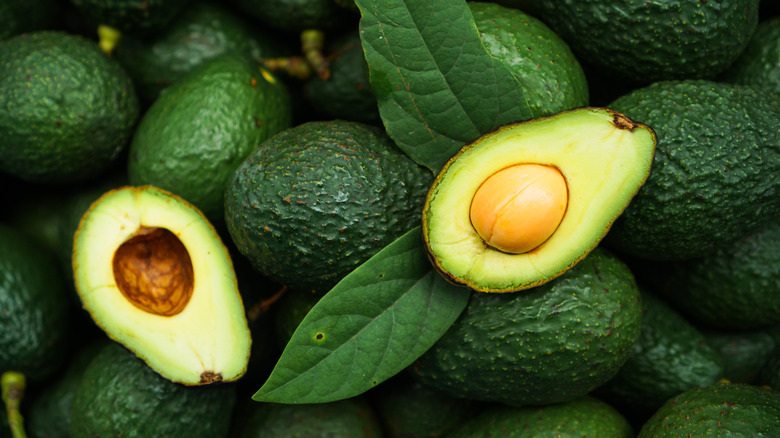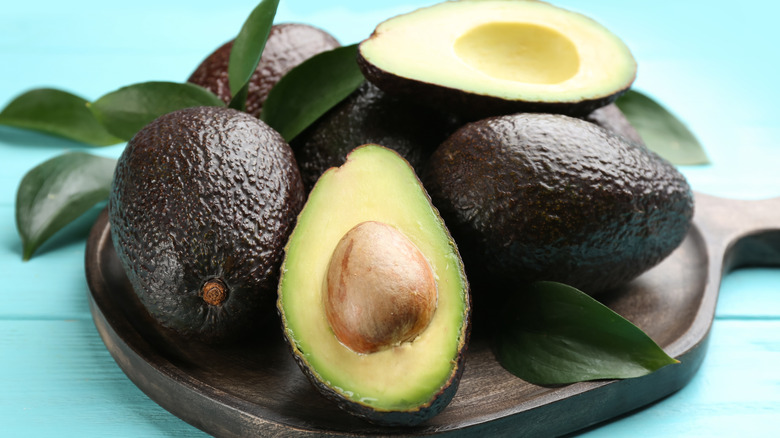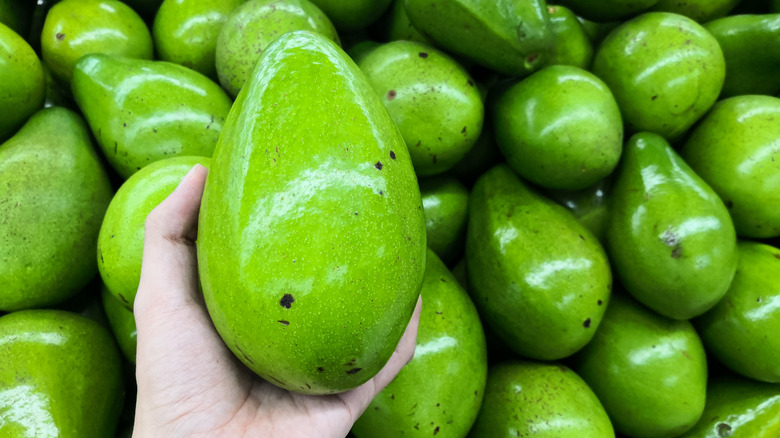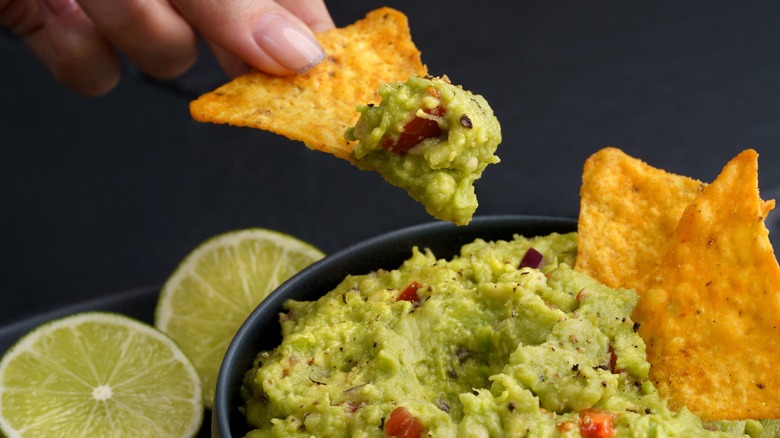Hass Vs. Fuerte Avocados: What's The Difference?
It's no secret that America has an ongoing love affair with avocados. If you don't believe it, just check out the numbers. According to the United States Department of Agriculture (USDA), the demand for avocados tripled between 2001 and 2018, with the average American consuming eight pounds of the pitted fruit in 2018 compared to two pounds in 2001 (via Statista). In a separate report by Statista regarding growth in terms of domestic consumption, in 1985, Americans ate 436.6 million pounds of avocados. Fast forward to 2021 and the number skyrocketed to over 3 billion pounds. With its mild flavor and creamy texture, the versatile avocado seems to have a place in virtually every recipe. One we cannot forget is the fan-favorite, avocado toast; a treat that has become so popular that you can now find it priced everywhere from $3 at Dunkin' Donuts to $18 for a souped-up version found in New York City (per Travel Channel).
Another factor for its popularity is the health benefits that avocados contain. Per WebMD, avocados contain several vitamins, minerals, healthy fats, and fiber. There are hundreds of varieties of avocados grown around the world (via California Avocados), but Americans are likely familiar with those that are grown in the United States. Two you are likely to see in your local supermarket are Hass and Fuerte. They may be interchangeable, but there are plenty about these berries (yup, avocados are technically berries, per Healthline) that make them unique.
Hass Avocados
Smithsonian Magazine tells the story of Rudolph Hass, a hardworking Californian who lived on a ranch and dabbled in growing Fuerte avocado trees at his home. In 1926 he came across a new type of seed that (unbeknownst to him) had never been grown in California before but, in fact, was eaten by natives in southern Mexico, Central America, and the West Indies for hundreds of years (via "Avocado Production in California"). Once the new seeds grew into immature trees, Hass attempted to graft the new trees with the Fuerte ones (essentially, he was trying to get the new trees to grow more Fuertes) and was successful with one exception. Close to chopping it down the failed tree, he ultimately decided to let it grow. What he and his family discovered was a fruit that was better than anything he'd previously grown, thus "discovering" the Hass avocado. This tree thrived for decades until it contracted root rot in 2002.
According to Avocados from Mexico, we learn that 95% of all the avocados eaten in America are the Hass varietal. Although one of the youngest types grown in the United States, it is now beloved by millions due to its distinctive smooth texture and nutty flavor. The skin of the Hass is very bumpy and turns almost black when ripe.
Fuerte Avocados
At the time when Rudolph Hass was in the midst of his experimenting, the Fuerte varietal of avocado was the country's most popular (via Smithsonian Magazine). In 1911, Frederick O. Popenoe, owner of the West India Gardens nursery in California, sought to find supreme types of avocados that would thrive in the Sunshine State (per a report compiled by The University of California Cooperative Extension, San Diego County, and The California Avocado Commission). He tasked his employee, Carl Schmidt, to find varietals attractive to buyers. Schmidt successfully tracked down a tree in Atlixco, Mexico, which he took budwood samples from, including one particular tree labeled "No. 15." Upon returning to California, the samples were grafted onto seedlings at Popenoe's nursery. During the winter of 1913, a catastrophic freeze killed most of the avocado trees in the nursery, but "No. 15" survived. The tree and its fruit were subsequently named "Fuerte," the Spanish word for strong.
Fuerte avocados boast a bright green skin that doesn't change color as the fruit ripens. The skin is sometimes so smooth it can almost look shiny. According to America's Test Kitchen, today, they are primarily grown in Florida. Fuerte avocados are sweeter and fruitier than the Hass variety, and Unique Packing describes their flavor as having notes of hazelnut and grass.
How Different Can They Be?
Aside from their physical differences, the main difference between Hass and Fuerte avocados is their textures. Both can be considered "creamy," but Hass has higher levels of fat which makes them downright "buttery." Fuerte avocados also have a higher water content, reducing their fat levels (per America's Test Kitchen). A simple side-by-side taste test might be a good idea if you are unsure which kind of avocado appeals to you more.
At the supermarket, choose ripe avocados. Once home, carefully slice them in half from top to bottom, and remove the large pits. Scoop out the flesh with a large spoon and discard the skin. Cut a few slices, maybe sprinkle them with some salt, and decide which avocado you like best. You can then make guacamole because it's awesome and also happens to be how most people enjoy this healthy fruit. Chow down with a bag of tortilla chips and enjoy!



